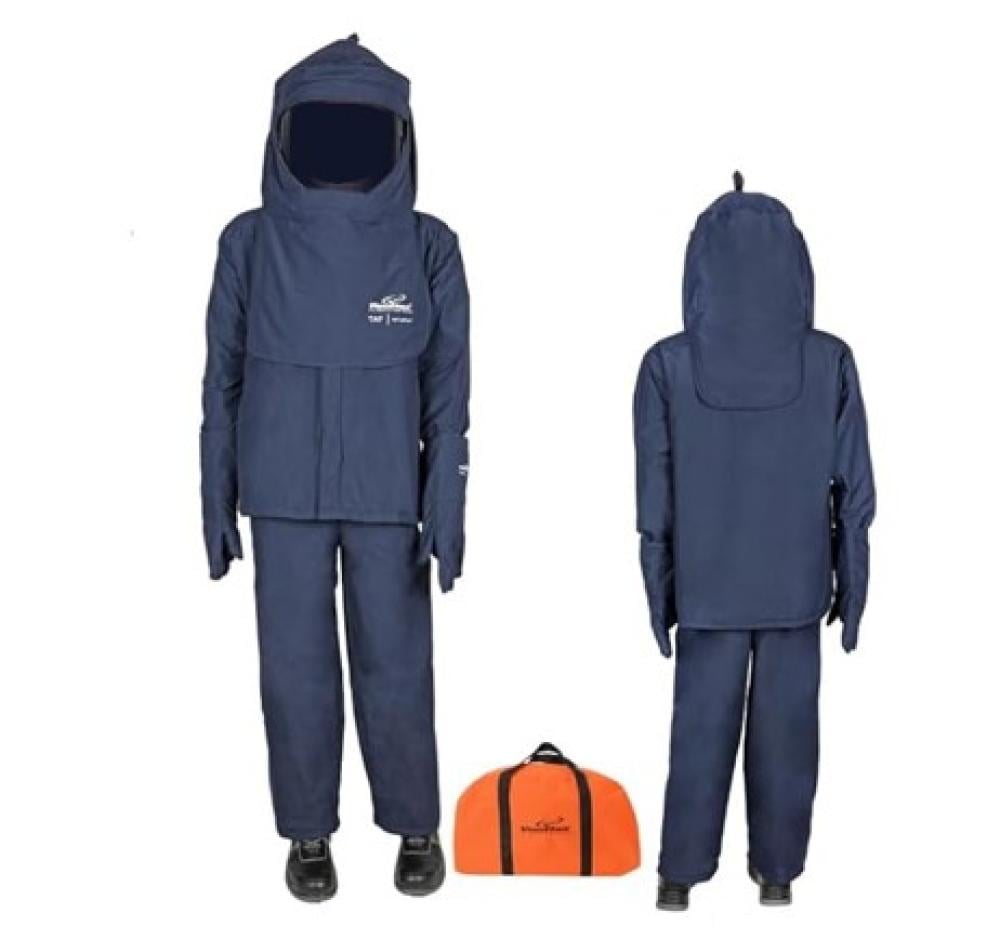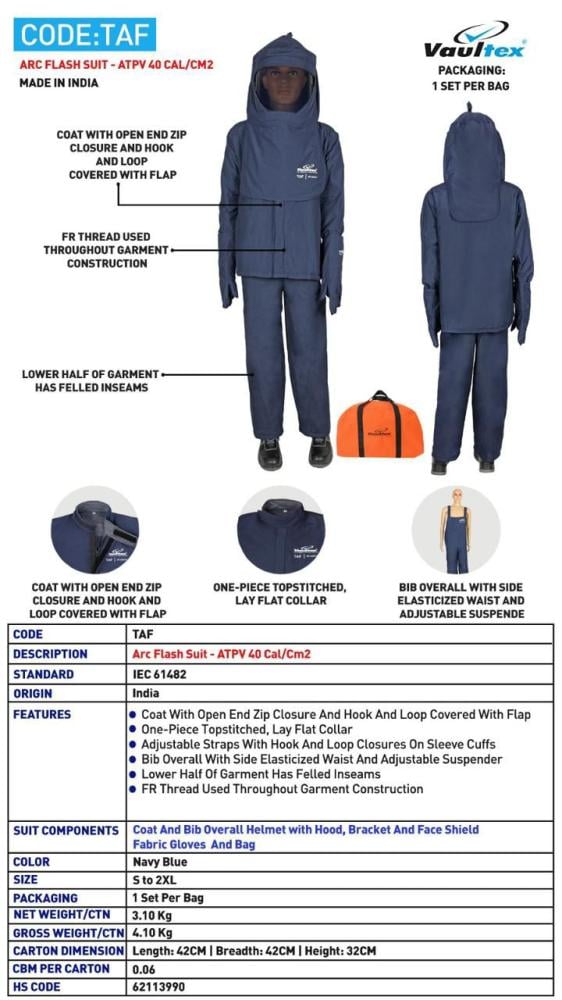- Arc suit is an essential piece of personal protective equipment designed to protect workers in environments with high risk of exposure to electric arc. These suits provide excellent protection against the intense heat and flames generated by an electric arc explosion, significantly reducing the risk of serious injury and burns.
- Code: TAF
- Description:
- Arc Resistant Suit - ATPV 40 Cal/Cm2
- Standard: IEC 61482
- Origin: India
- Features:
- Open end zip coverall with velcro covered hood.
- One-piece stitched top, flat collar
- Adjustable straps with hook and loop closure on sleeve cuffs
- Hooded overalls with side elastic waist and adjustable belt
- Lower half of garment has cut inseams
- Fire resistant thread used throughout garment design
- Suit components:
- Coat, Hood, Hooded Helmet, Bow, Face Shield - - -
- Gloves and Canvas Bag
- Colour: Dark Blue
- Size: S to 2XL
- Packaging: 1 set per bag
- Net Weight/Carton: 3.10 Kg
- Gross Weight/Carton: 4.10 Kg
- Carton Dimensions: Length: 42 cm | Width: 42 cm | HS Code
- Cubic Meter Per Carton: 0.06
- HS Code: 62113990
- ATPV 40Cal/cm2 Suit Specifications:
- ATPV 40Cal/cm2 Rating:
- This rating indicates the suit’s ability to withstand a thermal energy of 40 calories per square centimeter without causing second-degree burns to the skin. The higher the ATPV number, the more protection the suit provides.
- Materials: These suits are usually made from special heat and flame resistant materials, such as aramid or nylon. These materials are characterized by their ability to withstand high temperatures without melting or burning.
- Construction: The suit usually consists of two pieces: a jacket and pants. Both pieces are designed to provide full body coverage and protect all sensitive areas.
- Closure: The suits use strong, heat resistant zippers to ensure a tight and secure closure.
- Layers: Some suits have multiple layers to provide additional protection against heat and fire.
- Cuffs and collars: Cuffs and collars are usually elastic or have tape to ensure a tight seal around the wrist and neck.
- Pockets:
- Suits may have internal and external pockets for storing small tools, but they are designed in a way that does not affect the integrity of the suit.
- Colors: Suits are usually dark in color, such as black or navy blue, to enable good visibility in different work environments.
- Standards:
- Arc-resistant suits are subject to strict standards to ensure their quality and effectiveness. One of the most important of these standards is IEC 61482.
- Benefits of wearing an arc-resistant suit:
- Burning protection: The suit protects the skin from severe burns caused by an arc explosion.
- Reducing the risk of injury: The suit reduces the risk of severe burns and other injuries associated with electrical explosions.
- Increased safety:
- The suit provides a high level of safety for workers in hazardous environments.
- Compliance with standards: Suits that comply with standards ensure compliance with regulations and laws related to worker safety.
- Tips for choosing an arc-resistant suit:
- Check the rating: Make sure that the ATPV rating of the suit is appropriate for the level of hazard in the workplace.
- Choose the right size: The suit should be comfortable and fit the body to provide maximum protection.
- Pay attention to quality: Choose a suit made of high-quality materials and durable stitching.
- Check certification: Make sure that the suit has a certificate of conformity to international standards.
- Advice: Before purchasing a suit, consult experts in the field of occupational safety and health for appropriate advice.



